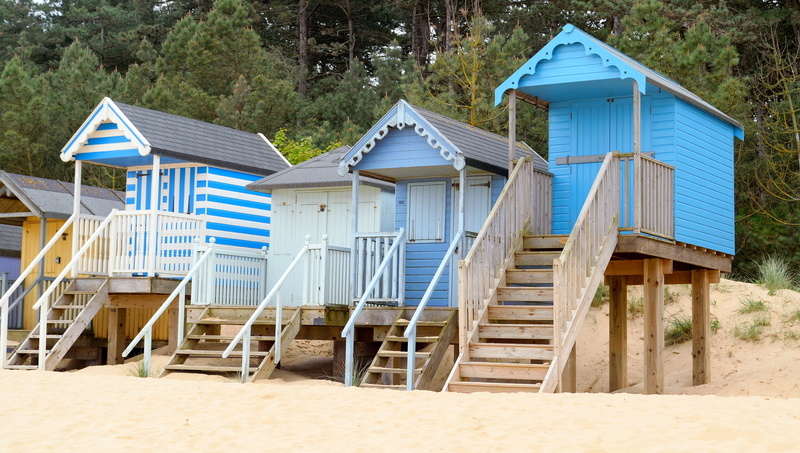Essential Safety Tips for Piano Moving and Why Going Pro Pays Off
Moving a piano is a significant undertaking that combines logistical complexity, physical demand, and real risk to both people and property. Whether you own an upright, baby grand, or concert grand, ensuring the safety of your instrument--and everyone involved--should be your top priority. In this comprehensive guide, we'll discuss persuasive safety tips for piano moving and uncover the crucial reasons why hiring professional piano movers is often a wise investment.
Understanding the Challenges of Piano Moving
Pianos are massive, intricate, and delicate instruments. Even the smallest upright pianos can weigh over 300 pounds, while grand pianos often exceed 1,000 pounds. Beyond their sheer weight, pianos contain thousands of moving parts, finely tuned strings, and sensitive components easily damaged by jostling or improper handling.
Because of these complexities, improper piano moving can result in:
- Personal injuries - Strains, sprains, crushed fingers, and back injuries
- Structural damage to the piano - Including broken legs, scratched surfaces, or misaligned keys
- Damage to property - Scraped floors, dented walls, and damaged doorways
- Costly repair or replacement -- Both for the piano and your home

The Ultimate Piano Moving Safety Tips
If you are determined to move a piano yourself, it's crucial to follow proven safety tips. Here are some essential piano moving safety tips you can't afford to ignore:
1. Prepare Your Path and Space
Before attempting to move the piano, plan the route from start to finish. Measure doorways, hallways, and any tight corners. Remove obstacles such as rugs, furniture, children, and pets. If possible, protect your floors and walls with moving blankets or corner guards.
2. Gather the Right Equipment
- Heavy-duty moving straps for leverage and support
- Sturdy furniture dollies rated for the piano's weight
- Piano skid boards for grand pianos
- Moving blankets and ample padding to prevent scratches
- Work gloves for safe handling and grip
Never attempt to move a piano without these essentials. The right gear offers both control and crucial protection.
3. Secure the Piano Properly
For grand pianos, remove the legs and wrap them separately. Secure the keyboard lid and cover the entire instrument with blankets fastened by tape or shrink wrap. For upright pianos, lock or secure the keyboard lid and wrap the body thoroughly with padding.
4. Lift with Care and Coordination
Use proper lifting techniques: bend at the knees, keep your back straight, and lift using the strength in your legs, not your back. Never try to drag or push a piano across the floor. Make sure all helpers are on the same page and communicate before any movement begins.
5. Always Have Enough Manpower
Depending on the size of your piano, you may need three to six people physically capable of safely handling the weight and bulk. Don't underestimate the manpower required--unbalanced or one-sided lifting leads to dangerous accidents.
6. Take Extra Care with Stairs and Tight Spaces
Moving a piano up or down stairs or through narrow halls is especially hazardous. Use a skid board for stairs and make sure every step is planned in advance. If you are unsure, it's better to consult an expert or hire professionals for these challenging scenarios.
7. Protect Yourself and Others
- Wear closed-toe, non-slip shoes
- Use gloves for better grip
- Keep bystanders, children, and pets clear of the pathway
- Avoid rushing - move slowly and deliberately
- Take breaks as needed to prevent fatigue
8. Secure Piano During Transport
In the moving truck, strap the piano securely against the wall to prevent shifting. Ensure it's placed upright for vertical models and flat for grand pianos. Prevent any movement during transit using wedges or padding.
9. Tune and Inspect After Moving
Once relocated, give your piano time to acclimatize to its new environment. After a few days, schedule a professional tuning and inspection to address any changes caused by vibrations or environmental fluctuations.
The Risks and Real Costs of DIY Piano Moving
Attempting do-it-yourself piano moving might seem cost-effective on the surface, but it often comes with hidden costs and risks. Failing to follow proper piano moving safety guidelines can result in:
- Injury: Severe back, hand, or foot injuries
- Instrument damage: From scratched finishes to catastrophic internal breakage
- Property damage: Broken stairs, chipped walls, and gouged floors
- Repair or replacement costs: Repairs can range from a few hundred to several thousand dollars; replacing a piano is far costlier
- Insurance issues: Standard home insurance often does not cover piano damages during a move unless handled by licensed professionals
After considering the financial, emotional, and physical risks, many piano owners realize that the best way to move a piano safely is to trust it to professionals.
Why Hiring Professional Piano Movers is the Smart Choice
Professional piano movers possess specialized training, experience, and equipment to manage any piano moving scenario. Here's why choosing the pros pays off--big time:
1. Safety First: For You and Your Instrument
Professional movers know exactly how to lift, carry, and transport pianos of all sizes without endangering anyone or anything. They work with precision and efficiency, minimizing risk at every stage.
2. Specialized Equipment
- Piano moving boards and skids for stability
- Custom-fitted covers to prevent scrapes or dents
- Heavy-duty ramps for stairs
- Secure straps and dollies designed for piano weights
This investment in the right tools translates directly to safer, more reliable moves and fewer mistakes.
3. Insurance Protection
Most reputable piano movers are fully insured, giving you peace of mind that, in the unlikely event of an accident, your investment is protected. This level of assurance is rarely available in DIY scenarios.
4. Experience with Challenging Moves
Navigating tight corners, multiple flights of stairs, or fragile old pianos is all in a day's work for seasoned movers. Their experience empowers them to anticipate and overcome obstacles that would challenge even the most prepared amateur.
5. Saving Time and Stress
Piano moving can turn into an all-day ordeal (or longer) for unprepared DIYers, with a high risk of frustration and mishaps. Hiring experts allows you to focus on the enjoyment of your new space, rather than the worries of the move.
Key Considerations When Choosing a Piano Moving Company
To maximize all the benefits of professional piano moving, consider these factors when choosing a moving company:
- Check reviews and testimonials for reputation and reliability
- Ensure the company has specific piano moving experience
- Ask about insurance coverage and guarantees
- Request a clear, detailed estimate upfront
- Confirm the use of proper equipment and techniques
It's also smart to ask if the company can provide references from previous piano moves. The cost of moving a piano professionally is almost always lower than the potential repair bills from a DIY misstep.

Frequently Asked Questions About Piano Moving Safety
How heavy is a piano?
Upright pianos typically weigh between 300 and 500 pounds; grand pianos may range from 500 to 1,200 pounds or more, depending on the model and materials. Always check your piano's specifications before planning a move.
Why shouldn't I move a piano alone?
Moving a piano solo is extremely dangerous. The risk of injury, loss of control, and property damage is high even for the strongest individuals. It always requires a team of trained handlers and the proper gear.
Do piano movers offer storage solutions?
Yes, many professional piano moving services offer climate-controlled storage facilities designed to protect your piano from humidity, temperature fluctuation, and potential damage.
Can I move a piano on carpet?
It's risky to move a piano directly on carpet due to the instability and potential for caster damage. Always use a furniture dolly or skid board and take extra care to prevent tipping or snagging.
How soon should I tune my piano after moving?
Wait at least one to two weeks after relocation before tuning your piano. Allowing your instrument time to adjust to its new environment ensures a more accurate and stable tuning.
Conclusion: Don't Gamble with Your Piano's Safety
The process of moving a piano calls for much more than muscle--it demands foresight, careful planning, and specialized skills. Following the essential safety tips for moving a piano can help reduce the risk if you attempt it yourself, but the stakes are high.
Going pro pays off in numerous ways: safety, protection, peace of mind, and ultimately, the health of your cherished instrument. When it comes to piano moving safety, entrust the heavy lifting to dedicated experts, and let your music continue uninterrupted in its new home.
Whether you're moving across town or just across the room, your piano is an investment worth protecting. Don't cut corners--choose professional piano movers and enjoy the peace of mind you deserve.



